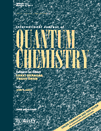Structure and optical spectra of bis(pyrrol-2-ylmethyleneamine) complexes: A DFT and TDDFT study of the self-assembly complexes of bis(pyrrol-2-ylmethyleneamine) ligands linked by alkyl spacers with Cu(II)
Abstract
The UV-Vis absorption spectra of self-assembly Cu (II) complexes for bis(pyrrol-2-ylmethyleneamine) linked by alkyl(CH2)n(n = 2,3,4,6) spacers were recorded. The ground-state geometries and electronic structures were investigated by density functional theory employing generalized-gradient approximation Perdew-Burke-Ernzerhof (PBE) and hybrid B3LYP (20% Ex,HF)and PBE0 (25% Ex,HF) functional, in conjugation with four basis set combinations.[BS1:6-31G(d); BS2:Lanl2dz for Cu and 6-31G(d) for C,H,N; BS3:6-31+G(d); BS4:6-311+G(d,p) for C,H,N and Lanl2dz for Cu]. Compared the optimized geometries with XRD structures, it was found that the choice of methods appeared to have a more pronounced effect on structure than that of the basis set. PBE0/BS4 optimized geometries provide the best agreement with XRD experimental results and the mean absolute errors for bond length is 0.018 Å and for bond angle is 2.1°. Transition excited states of complexes 1–4 in the gas phase and in CH2ClCH2Cl solution have been studied by the time-dependent density functional theory in conjugated with the Polarizable Continuum Model. Pure PBE and hybrid B3LYP, PBE0 functionals, as well as BS1, BS2, and BS5 [6-311++G (d,p)] were selected. Calculations indicate that PBE functional provides more accurate descriptions on main UV-vis absorptions than B3LYP and PBE0 functionals. The strongest absorption bands located at 338–356 nm are due to intraligand charge transfer (ILCT) transitions, a mixed-character ILCT + metal-ligand charge transfer (MLCT) absorptions are calculated at 280–291 nm, the shoulder bands located at 250–257 nm mainly arise from MLCT or ligand-metal charge transfer transitions. Alkyl spacer does not play a crucial role on the main electron transitions. © 2010 Wiley Periodicals, Inc. Int J Quantum Chem, 2011




